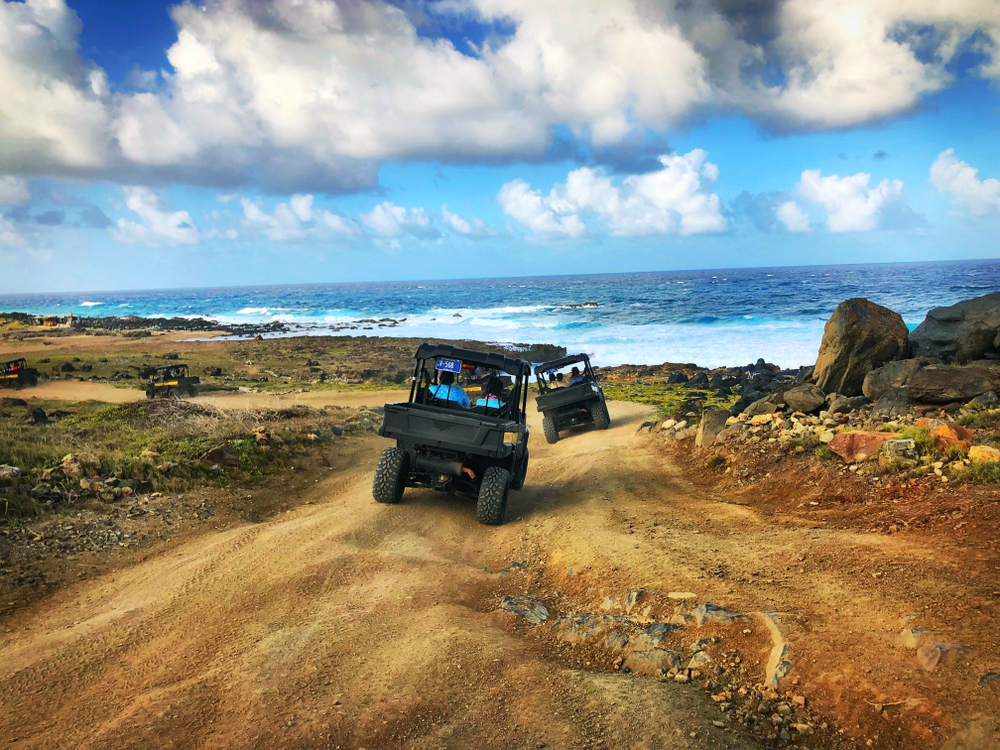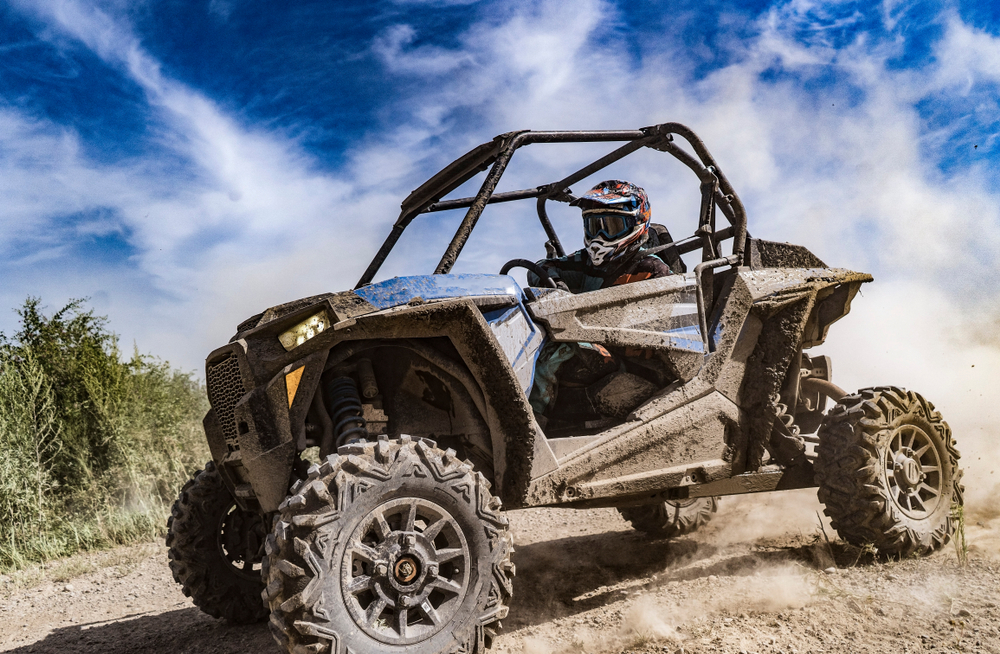UTV is not a cheap investment. It’s one that probably took you blood, sweat, and tears before you were able to obtain it. While UTVs have been designed to endure rough terrains and conditions, this doesn’t mean that you shouldn’t take care of them the same way you pamper and maintain other vehicles you own.
UTVs are meant to make it through many years, for as long as you’re vigilant about their maintenance. From the condition of the hardware and the engine, to the comfort level of the seats, there are a lot of factors to consider to keep your UTV the way you wish it to be.
What Is A UTV?
UTV stands for Utility Terrain Vehicle. As their name suggests, UTVs are built more for work rather than merely for recreation. This fact is what immediately separates it from an ATV. UTV is also known as a side by side vehicle as it can fit passengers side-by-side, plus it has a lot of available storage space.
These are some of the features of a UTV:
- Safety equipment. Seatbelts are present as a standard feature. Optional add-ons may include roll bars and windshields.
- Wheels and tires. UTVs have a standard base of four wheels.
- Cabin. Some UTVs have cabin space. This is comparable to that of a golf cart.
- Steering. The UTV is driven like a car, hence it has a steering wheel.
- Function. The UTV also serves a useful purpose. Generally used in farms, this is used for hauling produce and other equipment. In bigger universities, they’re also present to help transport students, usually athletes, and other equipment from one end to another.
- Passenger capacity. Generally, two to four passengers can sit comfortably in a UTV.
- Braking and acceleration. Foot pedals control these.
- Speed. UTVs are generally faster when compared with ATVs. The maximum speed runs anywhere between 25mph and 50mph.
- Cost. When compared with ATVs, UTVs are generally more expensive.
Generally, UTVs are safe. They come with safety features, as required for off-highway vehicles. Hence, despite the rough terrain that UTVs frequently trek, you’re still guaranteed some reasonable level of safety as the passenger.
UTV Care Tips
Maintaining your UTV doesn’t always have to feel like a chore. Here are excellent pointers to remember:
- Always Check The Battery Level
As is the case with all the other vehicles that you may own, you need to pay attention to the battery level. Generally, the battery of a UTV is meant to last even through the harshest of all weather conditions, from warm summers to cold winters. But, the challenge starts to kick in when you store your UTV and leave it unused for a relatively long period. Usually, this happens during the winter season or when the days get busy, and you don’t have enough time even on the weekends to go on trails.
To maintain the battery, follow these tips:
- Remove the battery from the UTV and clean the terminals. The cleaning of the terminals should be limited only to using warm water and baking soda. However, a bonus expert tip that you might want to try is to use Coca Cola. Yes, aside from that being a refreshing drink, it also works as an excellent cleaning agent.
- Invest in a battery gauge. This can help ensure that the next time you use the UTV after a long period of storage, it stays fully charged.
- Read The Manual Of Your UTV
Generally, UTVs are alike, if not similar. But, depending on the specific manufacturer and kind of your UTV, it may have different care instructions. As the owner of the vehicle, it’s your responsibility to be familiar with what’s written on the manual. Relevant information can include matters relating to:
- Suggested regular servicing schedule of your vehicle
- Riding requirements of your car
- All other necessary and helpful information to ensure a safe and comfortable ride
- Check The Fluid Levels Regularly
The fluid levels of your UTV usually pertain to the water and the oil. It’s imperative to regularly keep an eye on them as they protect your UTV’s engine from getting damaged. Additionally, periodically checking the fluid levels is a proactive measure as it can save you from expensive repairs in the future. As much as possible, check the fluids at least once a month to ensure that everything is in order.
Here are other tips to remember in line with checking fluid levels:
- Find out the specifications of your model as to how often you may need to do a full oil change.
- Know the status of your fluid reserves by looking at the oil, water, and coolant differential fluid levels.
- Also Check The Other Important Parts
Apart from the fluid levels, there are also other parts of your UTV that you have to check regularly. Some of these vital parts include the following:
- The handlebar grips. The grips must be tight to ensure a safe ride on the trail. Should the handlebar grips get loose, the safest remedy is to replace them with brand new ones.
- The brakes. Always check if there’s still an ample amount of pads left on the brake pad. While you’re at it, check the wheels also for any intrusive items that may have been left from the previous trail. Else, halfway through your trail, you may end up in a sticky situation, such as a flat tire.
- The levers. These parts are what’s responsible for controlling the UTV. The levers should be firmly clamped on the handlebar. When in use, they must be attached securely, such that they don’t move.
- Tire pressure. Poor tire pressure can result in damage to the wheel. You can check the tire pressure by going through a gas station or a tire pressure gauge if you have one. The front tires are also essential to keep in excellent condition. Not only does this mean a smoother ride, but it also can result in your tires lasting longer.
- Replace Interior Components Regularly
Your UTV is meant to last you for many years. But, the lifespan of your vehicle is highly dependent on the care that you can give its internal components, such as the motor and other pertinent parts.
Examples of these internal parts that you’ve got to replace regularly include the air filter and the spark plug. These wear down over time. If you don’t replace them, you’re putting them at risk of breakdowns and weak performance.
- Practice Excellent Post-Care
As fun as going on a trail may be, take note that you’ve got a job you ought to perform right after all the exciting adventure. After a long day on rough terrain, your UTV deserves some TLC. More so when you know you’re going to store your UTV for an extended period before you take it out again on another adventure.
Here are some essential post-care tips:
- If you’re not going to put it in a roofed garage, Cover your UTV while parked.
- After a long day, make sure that you wash up your UTV. Also make sure that as you do so, water doesn’t sit on any of the parts that rust easily.
- Service The Driveline
The driveline plays a significant role in the overall functioning quality of your UTV. Either a belt or a chain, the driveline gives power to your tires. Because of this function, it’s of paramount importance, therefore, that the driveline must always be lubricated. The tension also shouldn’t be too tight or too loose.
Servicing the driveline can be done by yourself at home only if you already consider yourself an expert. But, if you’re doubtful of how good of a job you can do, it’s best to leave it in the hands of a professional by taking your UTV to a servicing shop instead.
- Tighten The Wheels’ Lug Nuts
The lug nuts of the UTV’s wheels are responsible for keeping the wheels tightly fastened on the vehicle. As you check for the tire pressure, it’s also important to tighten the lug nuts. When you’ve been riding through rough terrain, the lug nuts can get loose. After all, they’ve been exposed to so much pressure.
When the lug nuts get loose, this can cause serious harm while you’re on a trail.
- Have Some Insurance To Cover Your UTV
NO, it’s not only your car that should be covered by insurance. Even your UTV, along with your ATV, can also have some form of coverage. As an umbrella of protection, you should sign up for one. Remember that although your UTV isn’t going to be as expensive as your car, it’s still a costly asset. Should anything happen to it, it would be nice to have insurance cover the costs.
Conclusion
UTV is a type of vehicle that you can take through different terrain conditions, from a simple trail like a muddy paddock to a rocky mountain. To keep its robust condition, maintenance is always crucial. Take care of it the same way you look after your car. If you wish for your UTV to last you longer, regular check-ups and repairs are essential. Start with the above-mentioned tips, and if your UTV could speak, it would surely thank you.








